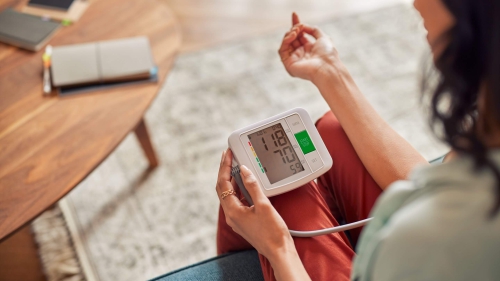Can Therapy Be Virtual?

Teletherapy is therapy that is done remotely rather than in person. It is a type of telehealth service that has seen a significant increase over the last two years since the COVID-19 pandemic began. Teletherapy has been around for a while, as it can be done over the phone, but more practitioners and patients began using videoconferencing platforms when in-person appointments were not considered safe. Teletherapy can be used for many types of therapy and has been found to be as effective as in-person therapy.
Mikaeel Ahmed Smith is the author of With the Heart in Mind: The Moral and Emotional Intelligence of the Prophet, which suggests that by studying the emotional intelligence of Prophet Muhammad (Peace Be Upon Him [PBUH]), we can improve the quality of our relationships with the people around us. He states in his book that the best therapists are those who are present with their patients so that they can connect on a kinesthetic and emotional level. Is this possible in a virtual counseling session?
For Licensed Clinical Professional Counselor Hadia Zarzour of Darien, Illinois, it was challenging at first to adjust to providing teletherapy online. She began offering teletherapy in April 2020 and found it difficult not to be in the same room as her clients. She worried how it would impact her interactions with them. “I wondered how we would get the same in-person experience behind a computer screen,” shares Zarzour. “In a counseling session, it’s important to see body language, but we have been able to make it work virtually.”
According to Zarzour, the option of teletherapy has encouraged those who were hesitant to seek help feel comfortable doing so through online platforms. She still offers teletherapy today and has global clientele because of teletherapy’s ease, accessibility, and affordability. “Patients don’t have to leave the comfort of their homes, which can be an additional layer of protection for anyone who suffers from social anxiety or phobia,” says Zarzour. “Teletherapy is helping break the stigma and normalizing mental health awareness. We have seen an increase in services as more people become aware of the many mental health resources available online.” Zarzour does note that one downside to teletherapy is trying to counsel children virtually. She prefers to hold in-person sessions with kids, as they may need play therapy and more interactive correspondence.
For practitioners who offer more flexible hours, one drawback of teletherapy is drawing the line between home life and professional life. One such practitioner is Sana Mohiuddin, a licensed professional counselor at the Khalil Center in Lombard, Illinois. “Sometimes, over access may cause a client to become too comfortable and expect more from his/her therapist in terms of availability,” says Mohiuddin. “Overall, though, people who did not have access to therapy before due to transportation, time restrictions, distance, work, or family obligations can now easily receive services online.”
Mohiuddin holds an M.A. in counselor education specializing in marital and family therapy from Northeastern Illinois University. When working with couples, Mohiuddin prefers in-person sessions to properly mediate between the individuals. “Married couples who are having problems are advised in Islam to seek mediation, and we are encouraged in sunnah to seek consultation,” Mohiuddin points out. “Therapy in the right setting can provide that.”
Lubna Iqbal* has been receiving both in-person and teletherapy for the last year and a half. When she first sought help, teletherapy was the only option available to her. “I definitely prefer meeting my therapist in person instead of [on] the computer,” says Iqbal. “I can’t look at my therapist’s eyes if I have to look into my camera, and she can’t fully see me or my body language.”
Iqbal was initially receiving therapy on a weekly basis but now goes every other week. Having the option of meeting online has been beneficial for her overall. “Having someone to talk to about my problems on a regular basis has really helped me,” Iqbal says. “I have been gaining the tools I need to heal myself.” Unfortunately, Iqbal has not been able to tell her father about seeking help for her mental health needs. She feels he will think less of her and has kept quiet about it.
Haleema Syed of Naperville, Illinois, understands the stigma that comes with seeking therapy. Back in 2016 after going through a painful divorce, she would consult a therapist over the phone. This led her to find a local support group for divorced Muslim women. A licensed therapist moderates as these women meet online or in person to seek advice and support one another through their various struggles. They even have a WhatsApp group to communicate more frequently. There is a deep level of trust among the women, and they all must sign a confidentiality and consent form that says they will not share each other’s stories outside of the group. “It’s a safe space for us to gain comfort and support from one another,” says Haleema. “I realized I am not alone and can count on this group for sisterly companionship, their prayers, guidance, and love. The group has now expanded outside of Illinois as more women are looking for support, even if it is virtually.”
Dr. Jawad Pervez is a board-certified psychiatrist practicing in Kenosha, Wisconsin, who provides telehealth to the majority of his patients. He finds it to be highly effective and states that we are still seeing benefits of teletherapy today. “The Prophet (PBUH) was very attuned to not only his own emotions but those around him as well,” Dr. Pervez reminds us. “It is a sunnah to preserve people’s mental health and to seek help from others—even help through telehealth. You cannot go wrong with seeking help; there’s no downside to talking to someone.”
God tells us in the Quran to “ask the people of knowledge if you do not know” (21:7). Dr. Pervez suggests not to limit one’s search for mental health providers to only Muslim ones. “Seeking help requires you to be aware of your own emotions and being able to express what you’re feeling,” he says. “There are many qualified practitioners offering teletherapy out there, which may seem quite confusing on who is the right professional for you. The first step is to see your primary care doctor to determine what type of mental health [guidance] you may need. That is the best place to start.”
With the advent of technology, our lives are constantly bombarded with gadgets and tools. Teletherapy has now become a beneficial tool for the advancement of mental health over recent years. According to Mental Health America (MHA), nearly 50 million Americans are experiencing a mental illness. Help is just a click away from the comfort of one’s home. Teletherapy may not be for everyone, but it is a readily available option at one’s fingertips.
*Name has been changed to maintain privacy.
Tayyaba Syed is a multiple award-winning author, journalist, keynote speaker, and performer. She readily conducts literary and faith-based presentations for a variety of schools, communities, and organizations both online and in person. She lives in Illinois with her husband and three children. Learn more at www.tayyabasyed.com.
Reprinted from the Summer 2022 issue of Halal Consumer Magazine with permission from IFANCA and Halal Consumer Magazine.

















